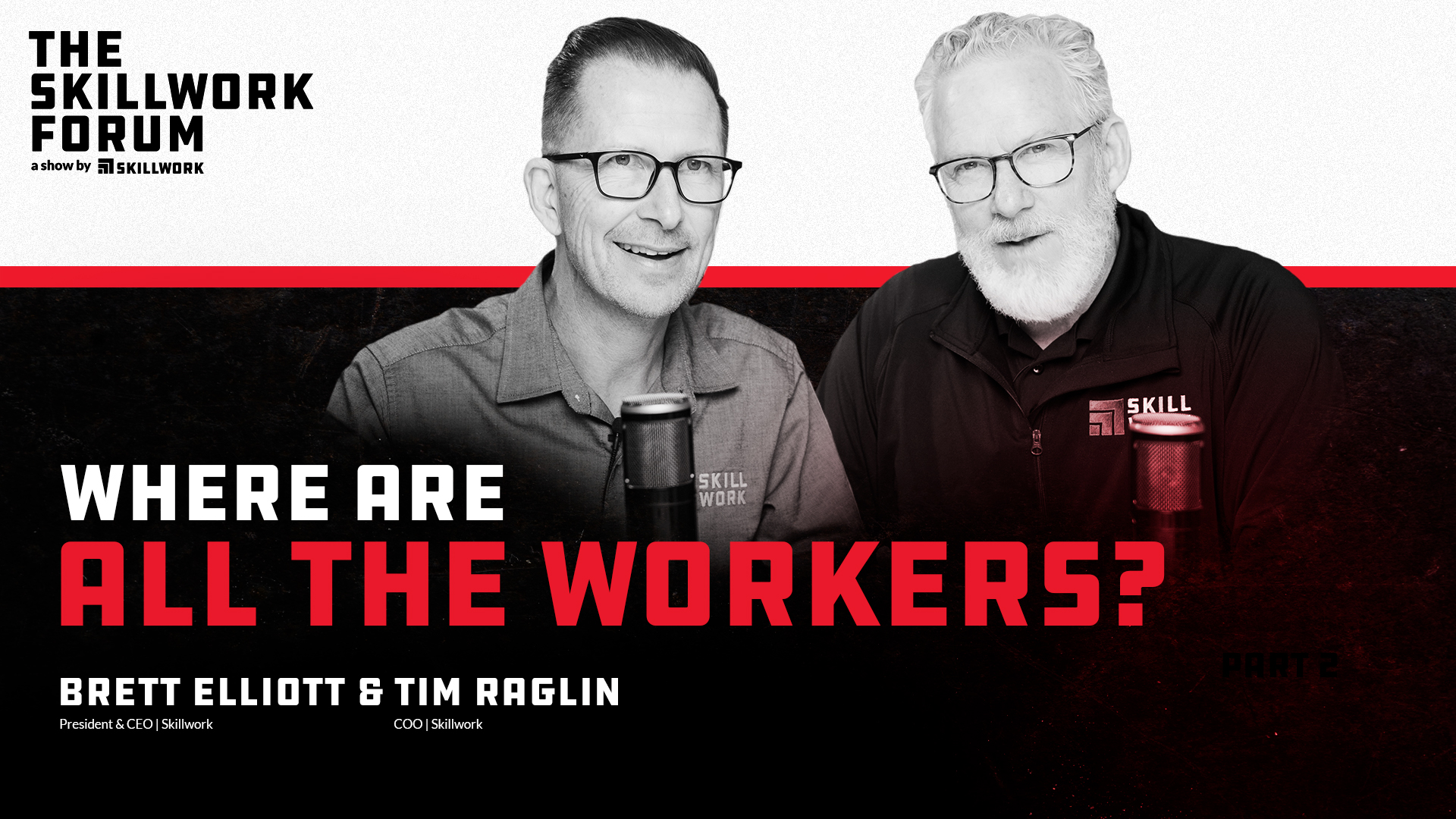2023 Skilled Trade Trends [Part 1]
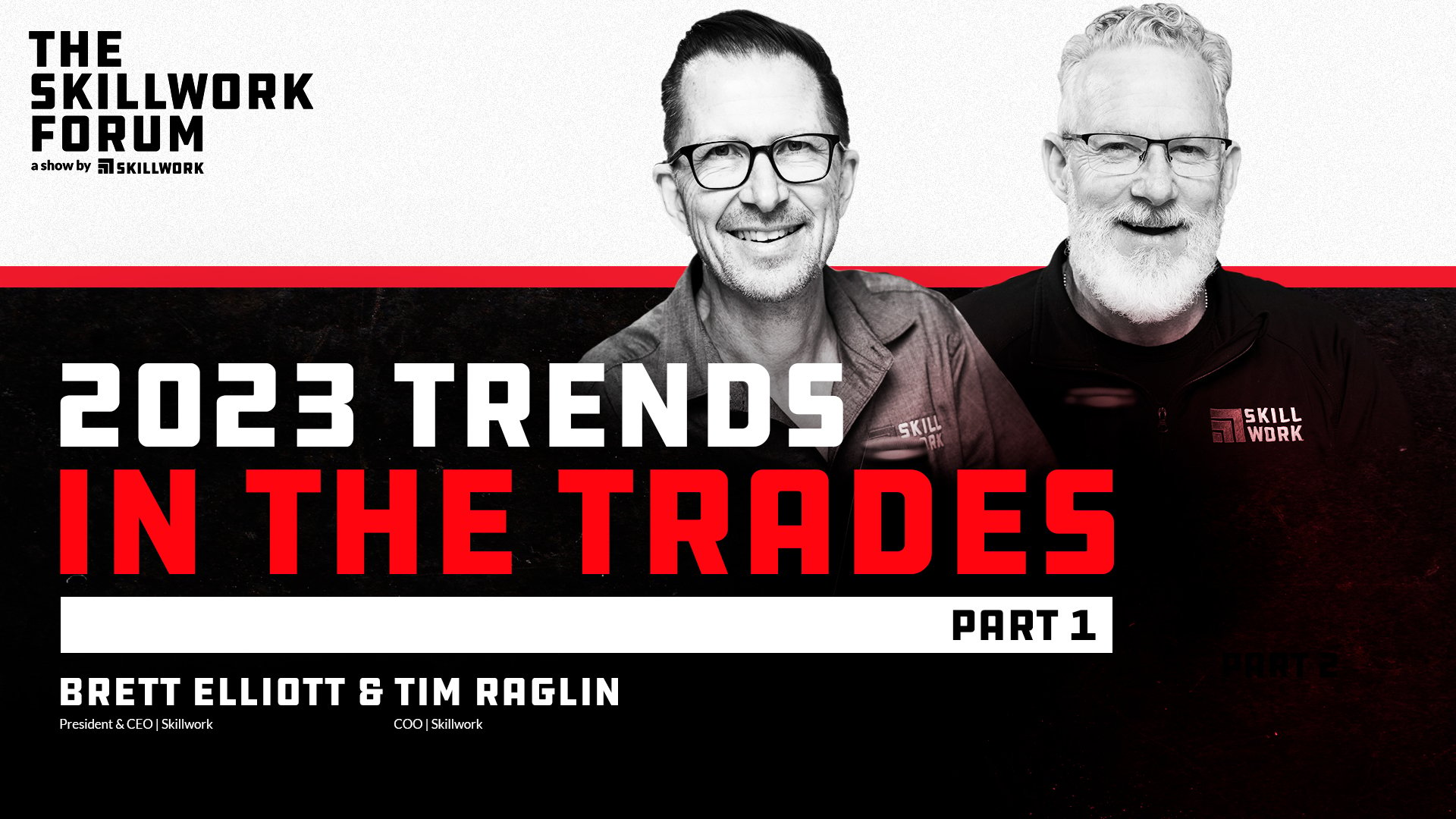
- Skillwork’s website: www.skillwork.com
- Skillwork’s LinkedIn: www.linkedin.com/company/skillwork
- Skillwork’s YouTube channel: www.youtube.com/channel/UCWZSf9KTuKudIm2buVFrhcw
- Rveal’s website: rveal.media
- Rveal’s LinkedIn: https://www.linkedin.com/company/rvealmedia/
- Rveal’s YouTube channel: https://www.youtube.com/channel/UC69p14R2ccMdyUbbmdlWCEw
Future of Skilled Trades in 2023
As we look back over the last couple of years, the labor market, particularly jobs in the trades, has seen all kinds of ups and downs. And now, we're facing a lot of uncertainty going into this next year.
The workforce is still recovering from historical unemployment rates due to Covid-19. During the pandemic, it spiked to over 8%, which was crazy for what we've seen in the past decade. Now, we're back down to about 3.7% across the country. However, skilled trades are still seeing a huge shortage of workers.
On top of the Great Resignation, we’re dealing with an evolving workforce, inflation, and whispers of a recession. In this article, we discuss the future of skilled trades by outlining several skill trade trends to look out for as we cautiously step into 2023.
We always try to look at what we see as skilled trade trends at the beginning of a new year, and there’s a lot to say, so we’re breaking up this topic into two episodes. We hope you’ll join us for both!
Trend #1: The Workforce Is Evolving
There's a changing dynamic in the mindset, culture, and makeup of today’s workforce. Baby Boomers are no longer the dominant generation in the workplace. Millennials are now the largest group of U.S. workers. Boomers that haven’t retired have moved into supervisory leadership positions and are learning to deal with this younger generation’s view on work.
As employers, you need to understand the things that matter to your new workforce, such as:
- Greater flexibility and independence
- Transparency and honesty
- Better benefits
- Sustainability
It’s estimated that 4.4 million Americans quit their jobs in 2022, known as the Great Resignation, and we don’t think that trend will end this year. There’s clearly less loyalty to a company, so if you aren’t proactively working to retain employees, you’ll lose them.
Your staffing and talent acquisition approach needs to change if you want to keep up with the ever-evolving future of skilled trades. The skilled trades shortage adds a level of complexity to the recruitment process, so consider reaching out to a skilled trades staffing agency like Skillwork that can help you find qualified workers faster.
Trend #2: Employee Surveillance in the Workplace
Another trend we’re seeing is employee surveillance in the workplace. When we say “workplace surveillance,” you likely think of cameras and security. But in this case, it’s more about monitoring the remote workforce, not only for productivity but for their well-being.
It’s answering the question, “How do we keep a geographically dispersed, disconnected workforce connected?” A better name for it is probably “virtual connectivity.”
Even if your workforce is not remote, such as jobs in the trades, the idea of monitoring activity is part of the fourth industrial revolution connected to the smart manufacturing workspace, which is the future of skilled trades.
If you implement that change correctly, it becomes more of a focus on the quality of employee output rather than clock watching. But, if you do it wrong, it comes across as Big Brother is watching you and infringing on privacy. So, employee surveillance in the workplace is something to look out for this year.
Trend #3: Culture
During Covid, a lot of companies lost the company culture that they spent decades, in some cases, developing. Now, given this new normal, they're having to figure out how to build it from the ground up.
Unhappy employees are one particular issue that can corrode culture. It could be low pay, not feeling valued, or a lack of desirable benefits. Whatever the case, unhappy employees in light of the skilled trades shortage is not good. Companies can’t just “plow through” and give a dollar raise to appease a dissatisfied employee anymore. If employees don't feel like they're thriving, they’ll leave.
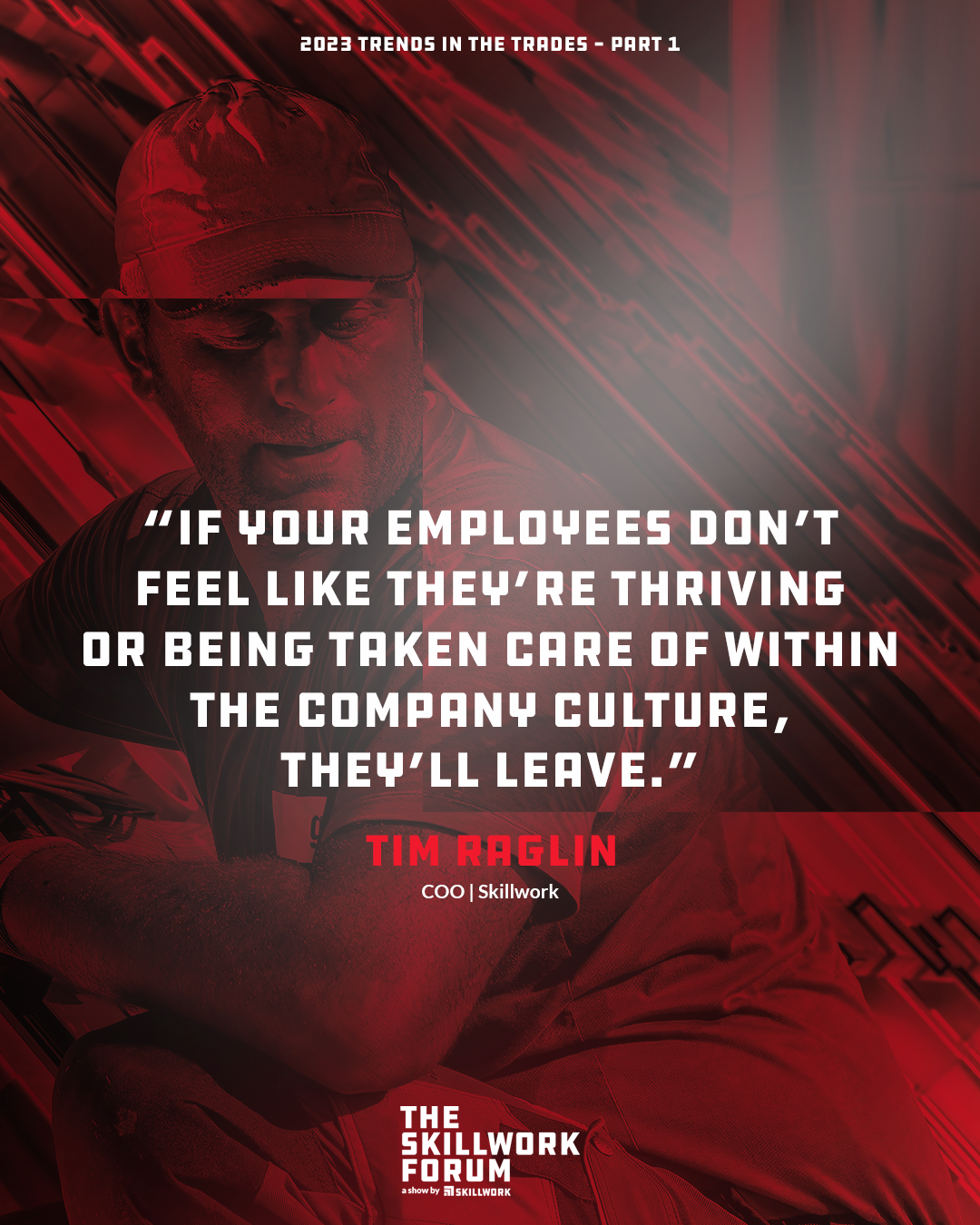
Trend #4: Inflation
It’s always helpful to define what we’re talking about: Inflation is the sustained increase in the price of goods and services available in the economy. So the main driver of inflation is the supply and demand for those goods and services.
If you think about Covid, we shut everything down. We created huge supply issues that we're still trying to dig out of. In the trades, primarily manufacturing, every facility we're in has been working hard to catch up to the demand. What happens, then?
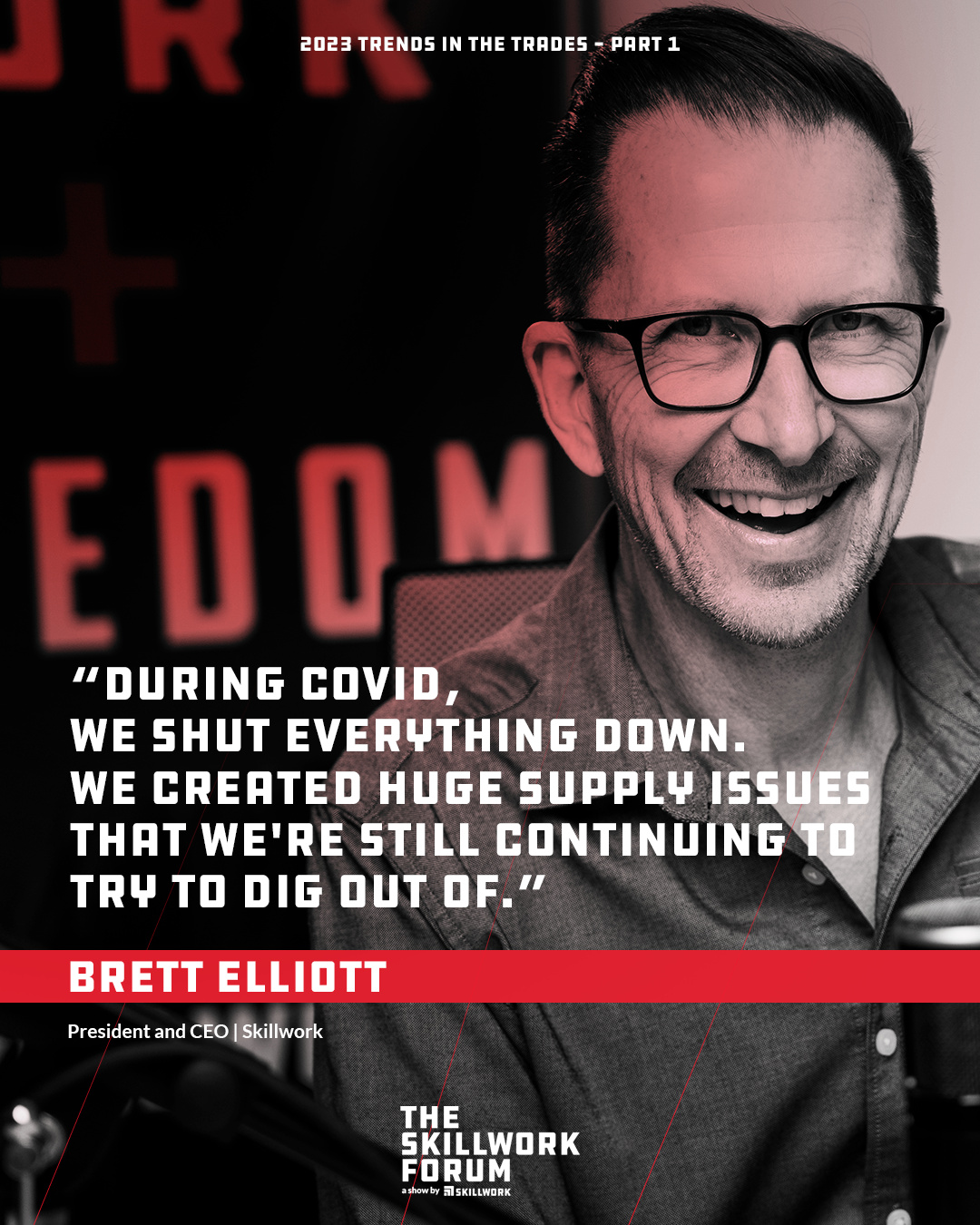
Naturally, those costs start going up based on higher demand. At that point, you have a few options:
- Cut costs
- Increase productivity
- Become more efficient
- Pass the costs onto customers by increasing prices (at your own peril)
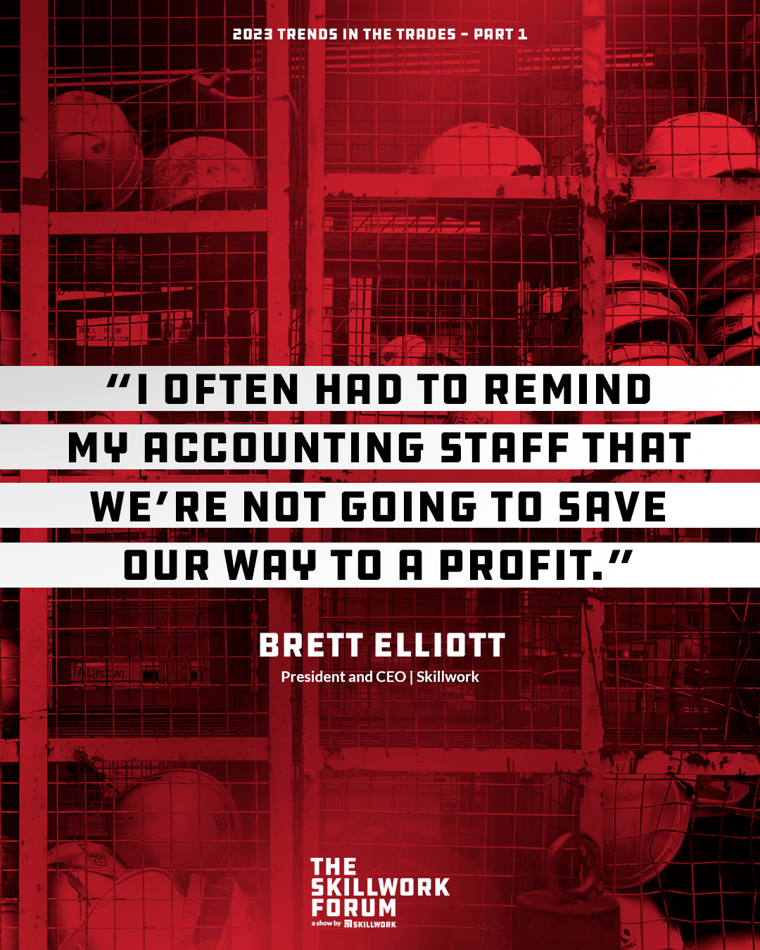
If you start cutting tradesmen’s wages amid a shortage of skilled labor, you’re (a) going to have a hard time retaining employees, and (b) you’re not going to be able to attract quality recruits to meet the trade skilled jobs demand.
The other day in the Midwest, we saw something that said employee wages are down about 3.3% with the current inflation rate. In layman's terms, if you increase wages by 3%, your workers get less value out of their dollars. So you really have to consider the real impact of what you're paying them.
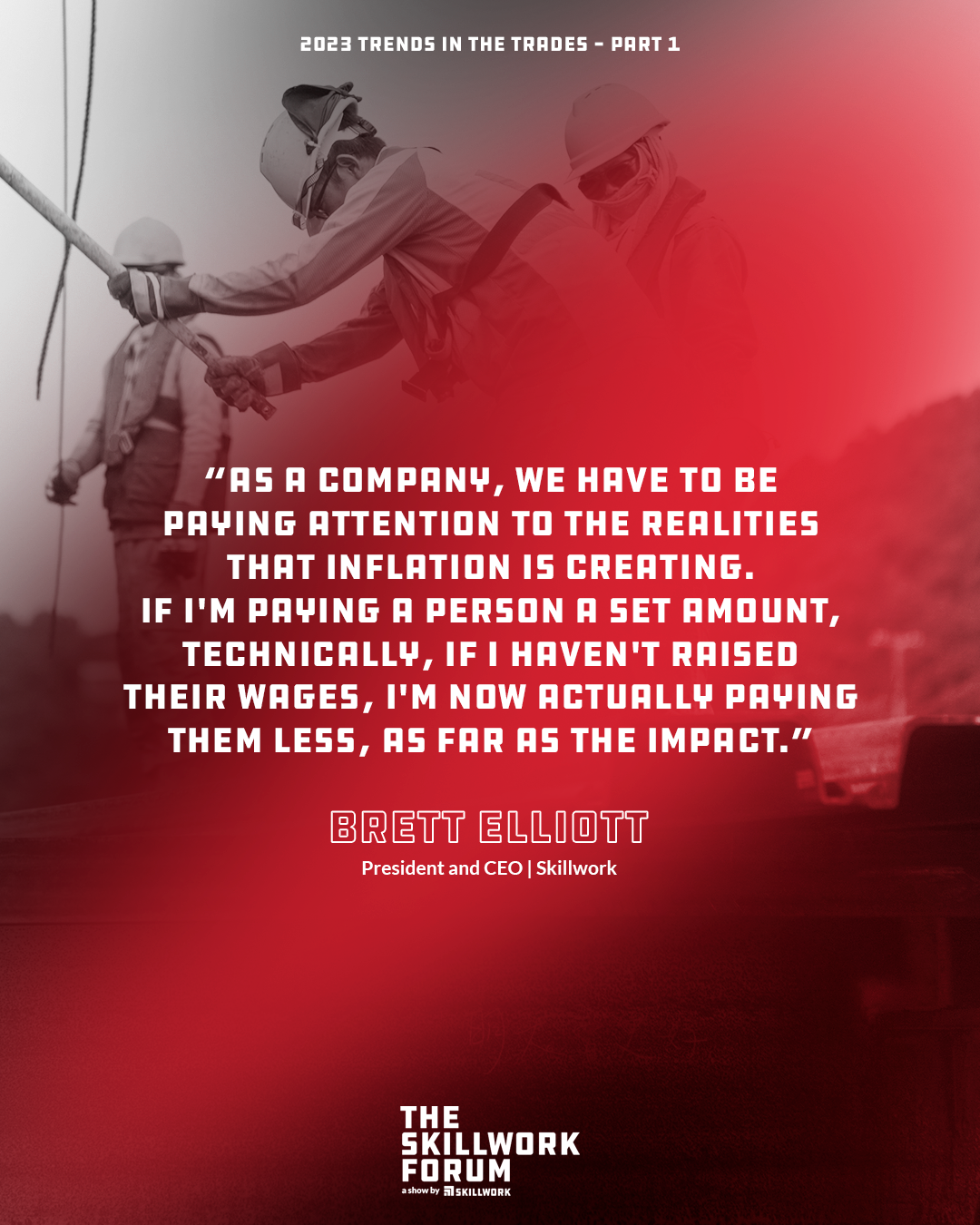
So far, we've talked broadly about the future of skilled trades by discussing post-Covid impact, the Great Resignation, and some things that will impact your ability to hire and attract staff. The skilled trade trends we’re seeing are related to changing demographics in the workplace, company culture, and inflation.
We ask that you rejoin us for the second part of this conversation as we look at more 2023 trends next time.


